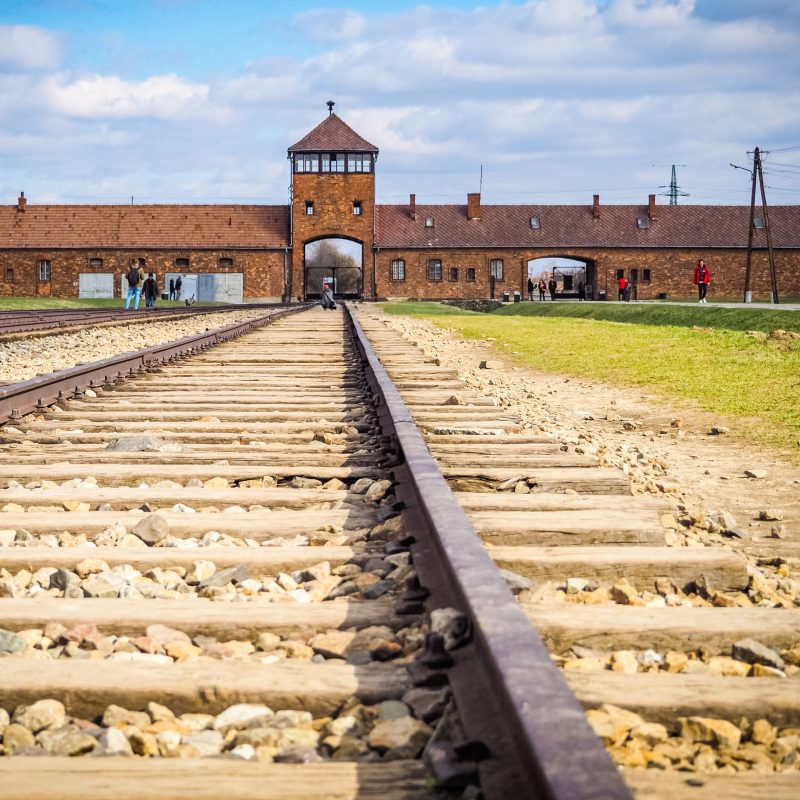
Poland is a country few of us know much about, and it’s no wonder. Up until 1989, Poland sat behind the communist iron curtain. It was a closed country: Travel in and out was near impossible for the curious traveler.
Videos by TravelAwaits
This shroud of secrecy meant that the key to understanding some of the most impactful recent world events, namely World War II, were out of reach save for interpretations in history books and movies.
But Poland is once again accessible and this proud nation isn’t shy about allowing visitors to contemplate the atrocities of WWII that occurred within its borders.
For history buffs, Poland offers a treasure trove of intrigue, mystery and, most importantly, answers.
To learn about these sites prior to your trip, I’ve included the titles of some movies you may like to watch ahead of time. I guarantee this will enhance your experience.
During our eight weeks touring this vast country, we visited many of its WWII sites and I share our top list of must-see spots below. These are listed in order of a suggested itinerary.

1. Oskar Schindler’s Enamel Factory
This world-class museum in Krakow is a tribute to Oskar Schindler, the solitary, wealthy German businessman who saved over 1,000 Jews from certain death in WWII by purchasing and running his ammunition shells factory using Jewish labor.
This museum is part of the Krakow Historical Museum, which provides an emotive, interactive, visually impressive exhibition on the Nazi occupation of Krakow.
Booking ahead is absolutely essential. Tickets are under $7 USD and a guide is recommended.
My Movie Recommendation: Schindler’s List, 1993, starring Liam Neeson

2. Auschwitz-Birkenau
Probably one of Poland’s most visited WWII tourist destinations, Auschwitz-Birkenau is also one of the saddest places most people will visit in Poland.
At Auschwitz, you will see the atrocious Jewish living conditions, the wall against which thousands were lined up and shot, the gallows where mass hangings took place in front of the assembled prisoners, ruptured gas canisters and mountains of shoes, spectacles, and human hair.
The vast Birkenau site, located just over a mile away, is the associated mass extermination camp.
Auschwitz and Birkenau can be visited from Krakow for a day trip. To get there, you can take the train or bus, hire a car and private driver, or join a tour.
The best time for a visit is in the shoulder season (May and June or September and October), not because there are fewer crowds — it’s always busy — but because of the heat. If it’s too hot, the tour will be cut short around Birkenau due to lack of shade.
With over 2 million visitors each year, this place books out quickly and daily numbers are restricted. You can enter for free before 10 a.m. and after 4 p.m. with a previously reserved time slot. I recommend booking a guided tour online, in advance, for about $30 for two people.
My Movie Recommendation: Auschwitz, 2011, starring Steffen Mennekes

3. Warsaw Uprising Museum
Opened in 2004 and voted one of Poland’s best museums, this Warsaw museum is a must visit.
Here, you will find numerous interactive displays, video footage, and photographs depicting what Warsaw’s occupants were fighting against when Nazi Germany occupied the capital city in 1944.
Make sure to see the thought-provoking film City of Ruins. It’s a 5-minute aerial look at the desolation of Warsaw after the war, showing that very few buildings were left standing.
You will also find an exact replica of a B24 Allied plane, the model used to make supply drops over the besieged city.
Entrance to the museum is free on Sundays, otherwise you will pay under $10 USD per person. Allow at least two hours to wander around and learn about the Uprising.
My Movie Recommendation: Warsaw Uprising, 2014, starring Jozef Pawlowski

4. Museum Of The History Of Polish Jews
Named the European Museum of the Year in 2016, this Warsaw museum, while not technically about WWII alone, gives an understanding of the Jewish population in Poland leading up to the Holocaust.
The Museum, which depicts a thousand years of the history of the Polish Jews, explains in an interactive way how the Jewish people were revered by society, how they were integrated into significant positions in the community, and how their skill set was used to bolster the economy of Poland.
Learn how the Holocaust drastically impacted the Jews of Poland. Also hear about the Jewish community revival after the Second World War.
The museum is closed on Tuesdays. Tickets are just over $7 USD.
My Movie Recommendation: The Pianist, 2002, set in Warsaw

5. Palmiry National Memorial And Museum
Located in the Kampinos National Park, a 30-minute drive from Warsaw, this became the site of 21 separate mass executions during the war. These were performed by German soldiers against 1,700 Poles and Jews, many of whom were academic and cultural figures.
Inside the museum you will find excellent information boards, photographs, and records of the atrocities of war. You will see exhumed items from the deceased, donated to the museum by relatives of the victims, in a number of glass cases.
Outside is a large, perfectly manicured cemetery of marked and unmarked crosses.
Entry to the museum is free of charge. It is closed on Mondays.

6. Treblinka Concentration Camp
Treblinka was the second-biggest Nazi death camp in occupied Poland.
Built away from prying eyes, two camps were set up by the Germans: a forced labor camp and an extermination camp. A despicable mass extermination of between 800,000 and 920,000 Jews took place here during World War II.
Although the buildings were burnt to conceal these war crimes, today Treblinka is the site of a small museum and an open-air memorial providing space for reflection and thought.
Located fewer than 70 miles from Poland’s capital, Warsaw, Treblinka is certainly a worthy site to put on your list.
The cost of Treblinka Museum admission for two people is under $10 USD.
My Movie Recommendation: Treblinka’s Last Witness, 2016, documentary

7. Wolf’s Lair, Hitler’s Bunker In Poland
Did you know Hitler had his headquarters in Poland, and spent 800 days there?
Famous for the failed attempt by Claus Schenk Count von Stauffenberg on Hitler’s life, the Wolf’s Lair is a series of bunkers hidden in the forest that even housed a casino to entertain the guards.
Today, you will find a small museum, informative storyboards, and the bunker ruins overrun by Mother Nature. Don’t expect, however, to be walking inside the bunkers, as they are off-limits.
My Movie Recommendation: Valkyrie, 2008, starring Tom Cruise

8. Museum Of The Second World War
This was, without a doubt, one of the best museums in Poland, in my humble opinion. Not only will you learn about WWII from Poland’s perspective, but this Gdansk museum also expands into an exploration of the Japanese side of the war.
The museum tells the story of the war in terms of politics, ideology, and civil population. It shows the lives and fates of civilians and soldiers, not just in Poland but in other European countries as well.
Admission is under $20 USD for two people and includes a recommended audio guide.

9. Westerplatte
It was at Westerplatte that Poland was first attacked on September 1, 1939. The Polish garrison in Westerplatte held out for seven days before surrendering.
Today, you can enjoy a comprehensive outdoor museum in the form of signboards that tell the story leading up to the war.
Then visit the memorial, an 80-foot granite statue made up of 236 blocks and known as Coast Defenders.
One of the guardhouses is a small museum, while the others are left in ruin for visitors to contemplate the fate of those at ground zero.
My Movie Recommendation: 1939 Battle of Westerplatte, 2013, starring Robert Zoledziewski

10. Hel
The Battle of Hel was one of the longest battles in Poland at the start of WWII. At Poland’s naval site, construction was still being undertaken when war broke out. Germany attacked by air, and while 2,800 soldiers fought bravely to stave off the enemy, Poland capitulated just 20 days later.
Today, you will see the tank embankments, a camouflaged tank, gun emplacements, and evidence of underground bunkers.
You can arrive at Hel by train from Gdansk and enjoy the modern seaside boardwalks that follow the ocean curvature. It is free to wander around.
Whatever sights you choose to visit in Poland, there are plenty of opportunities to fill your history cup to overflowing. Every town happily provides an opportunity to delve into its history, whether it’s a little or a lot. Poland’s efforts to provide a broader understanding of WWII will benefit anyone willing to visit its sites.
Touring the country? Here’s how to spend a day in Warsaw, seven beautiful places in Krakow, and a case for visiting the mysterious twisted trees of Poland before you leave.
